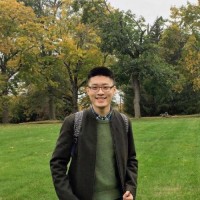Bridge the Gap: An Online Technical Problem Solving Course

Bill Zhao
Contact: LinkedIn
In these unprecedented times, college graduates need the most support to land a job. According to the Washington Post, the U.S. unemployment rate reached 14.7%, the highest since the Great Depression. It further underlines the importance of equipping students not only with the knowledge to achieve their academic success, but also the skills that are directly applicable in the working environment.
To address this concern, my Tech for Good research group developed an online learning course that guides students to solve industry questions effectively. By providing steps and optimized approaches to a given problem, students can have a better understanding of the coding interview structure, therefore strengthen their fields of expertise. We have written 84 lessons, with 25% of them in arrays, 18% in hash tables, and 17% in strings.
This online course significantly improves accessibility and communication with features that cannot be achieved in classrooms. As a self-paced online course, it is easily accessible anywhere and can be completed at any time. Students have the option to allocate more time in the areas they need to improve upon, making their learning experience customizable and tailored to their specific needs. In addition, students are encouraged to share their questions and ideas beyond what has been given in the lessons, keeping the community of instructors and classmates engaged in improving the learning experience.
By utilizing multiple choice and short answer questions throughout the lesson, this course ensures each student is staying on track, follows the solving process provided with hints and techniques. This contributes to students’ knowledge outside of the school, focused on the interviews and challenges that often appear in the industry.
While our Computer Science curriculum brings outstanding academic excellence to undergraduate students, it is extremely critical to prepare graduates for their careers given elevated competitiveness and uncertainties. As demonstrated in the approach of this project, students are better prepared for the transition, through guided learning, to meet their long-term expectations after college.